What’s the most difficult thing you have to do when planning to build an outdoor kitchen? Deciding on the counter material. What makes this task so challenging? Outdoor kitchen countertop materials must be food safe, easy to maintain, within the family’s budget, long-lasting, and resistant to the elements. Oh, yes, you must also like the color, style, design.
Don’t get disappointed just yet! There are quite a few materials that would make an excellent choice for outdoor kitchens and while they all have their advantages and disadvantages, you do have a choice. And that’s a good thing. Should we take a look?
Concrete – for seamless outdoor kitchen countertops
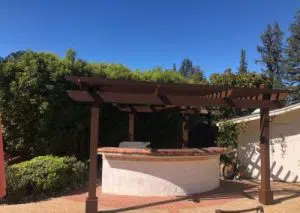 One of the greatest advantages of concrete is durability. Concrete is made of cement, water and aggregates. Since it can be formed into any shape, it gives you the chance to think out of the box – as far as the outdoor kitchen design is concerned. But this is a great choice for those who don’t look for perfection, in terms of appearance. It’ll be ideal though for those who want a seamless countertop. And while concrete can be tinted to the color you like, the color may fade overtime. The major disadvantage of concrete? There might be some imperfections or cracks over the years, but such things are also subject to the installation. Make sure you find an outdoor kitchen builder with experience in working with concrete. It’s also porous – thus, must be remain sealed, and doesn’t come cheap.
One of the greatest advantages of concrete is durability. Concrete is made of cement, water and aggregates. Since it can be formed into any shape, it gives you the chance to think out of the box – as far as the outdoor kitchen design is concerned. But this is a great choice for those who don’t look for perfection, in terms of appearance. It’ll be ideal though for those who want a seamless countertop. And while concrete can be tinted to the color you like, the color may fade overtime. The major disadvantage of concrete? There might be some imperfections or cracks over the years, but such things are also subject to the installation. Make sure you find an outdoor kitchen builder with experience in working with concrete. It’s also porous – thus, must be remain sealed, and doesn’t come cheap.
Granite – the beautiful, long-lasting choice
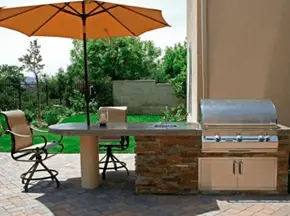 As a natural stone, granite is as strong as a rock. It is. Actually, it is – perhaps, the very best option for outdoor kitchen countertops due to its durability. To give you an example. The hardness of such materials is often compared with the knife’s blade. Be sure to use a cutting board when you use a knife on the granite countertop. But hear this, not to protect the countertop but the knife’s blade. That’s how bulletproof granite is. And that’s not all.
As a natural stone, granite is as strong as a rock. It is. Actually, it is – perhaps, the very best option for outdoor kitchen countertops due to its durability. To give you an example. The hardness of such materials is often compared with the knife’s blade. Be sure to use a cutting board when you use a knife on the granite countertop. But hear this, not to protect the countertop but the knife’s blade. That’s how bulletproof granite is. And that’s not all.
Granite is heat resistant. It’s also stain resistant but only if it’s properly sealed. And this is probably its major downside. It must be sealed since it’s porous. But if you don’t mind that, it will be highly hygienic too. Another consideration? It’s one of the most expensive countertop materials.
Soapstone – the best choice for outdoor kitchens
While not all soapstone slabs are created equal, this is one of the best choices for outdoor kitchen countertops. Let me explain. Soapstone is a metamorphic rock, which contains various minerals and talc. Now, the proportions determine the hardness of the rock. The more talc, the softer. Although you should ask your outdoor kitchen contractor about that, it’s good to know that the hard soapstone rocks are usually used for the construction of countertops.
With all that said, let’s move on to the main advantages of soapstone. Apart from being really durable, it’s also dense and non-porous – so, you can forget about sealing the countertop, it’s easy to shape, it’s resistant to heat and acids – hence, germ-free.
So, is soapstone perfect for outdoor kitchen countertops? It almost is. What’s the catch? Soapstone is susceptible to scratches – although they can be sanded and thus, fixed, unless you like the wabi-sabi look. Overtime, the colors darken but you can keep them intact by applying mineral oil every few years. If you intend to get slabs larger than 7′, there’ll be seams – although they can be covered to nearly disappear. Price-wise? It’s not cheap, but not as expensive as granite. We told you – soapstone is quite an excellent choice.
Tile – the affordable countertop option
Tile is always a good option if you want to keep the outdoor kitchen building cost down due to the material’s low price. As for the appearance, there’s a big list of colors and designs to meet all styles. So, there’s no concern about that either, unless you hate the seams created with grout. And this is actually the worse problem when it comes to tile surfaces. Grout is absorbent and so, it needs to be cleaned often and sealed once in a while. If not, it will be stained and won’t be entirely food safe. During extreme temps, tiles may crack. But the good news is that they can be replaced quickly.

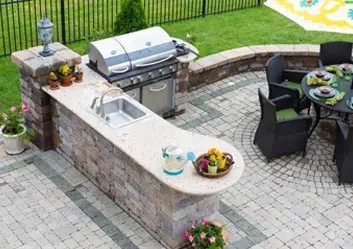
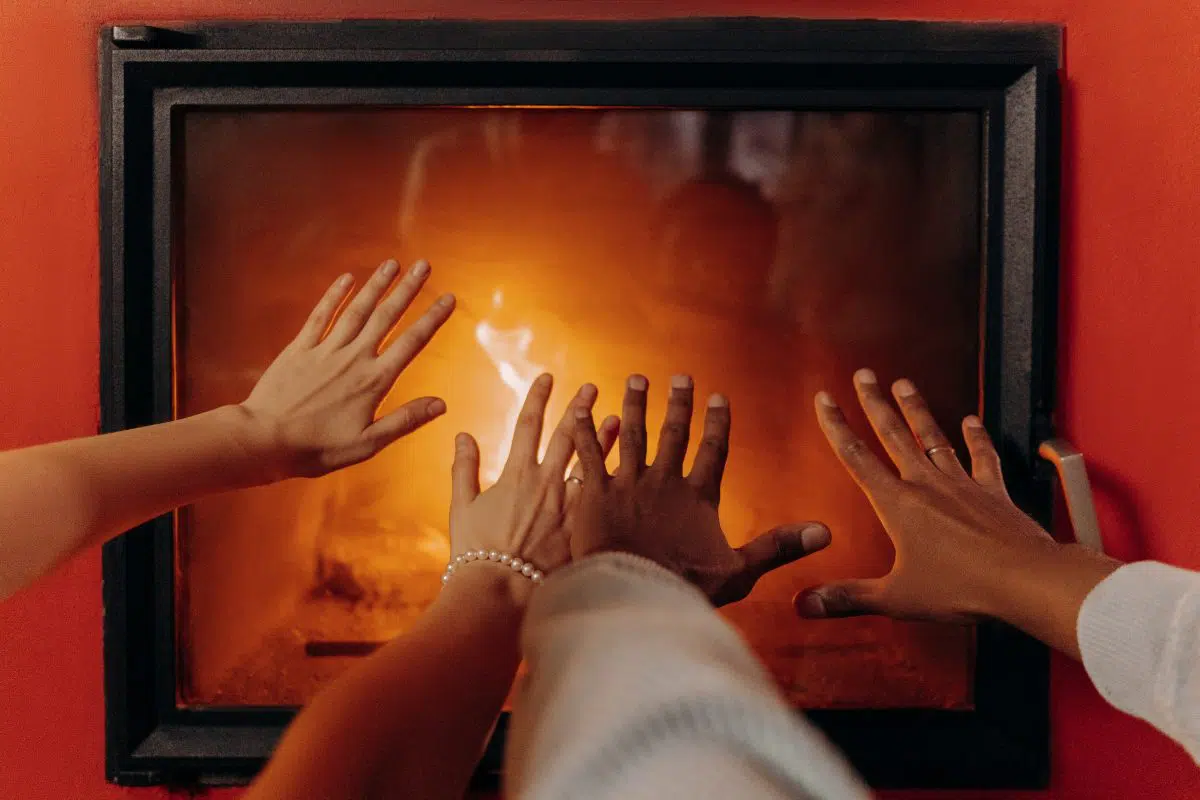
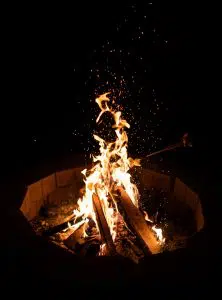 An outdoor fireplace is always an excellent option. That’s a more permanent structure but one that can truly transform this section of the backyard into an outdoor living room. Whether it’s made of concrete, stone, brick or another material, it will certainly be the focal point of the backyard. You just need to consider its location in accordance not only with the outdoor kitchen but in terms of where it blows its smoke (so that you will not have problems with your neighbors), while you need to consider if there are trees hanging over it.
An outdoor fireplace is always an excellent option. That’s a more permanent structure but one that can truly transform this section of the backyard into an outdoor living room. Whether it’s made of concrete, stone, brick or another material, it will certainly be the focal point of the backyard. You just need to consider its location in accordance not only with the outdoor kitchen but in terms of where it blows its smoke (so that you will not have problems with your neighbors), while you need to consider if there are trees hanging over it.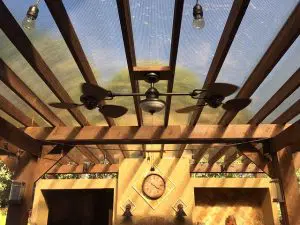 While heating sources can create the ideal conditions for the entire year, you will be better protected from the elements if the outdoor kitchen and the entire seating area around it are all covered. The choices? You can cover with a gazebo or concrete. You can also hang insulated drapes or just curtains that will cover the whole perimeter – from one pillar to the next, and thus, protect you from the cold and the rain. If there’s a roof and some form of portable walls or shutters around the outdoor kitchen area, there’ll be enough protection from the elements. That combined with some heater will make a difference.
While heating sources can create the ideal conditions for the entire year, you will be better protected from the elements if the outdoor kitchen and the entire seating area around it are all covered. The choices? You can cover with a gazebo or concrete. You can also hang insulated drapes or just curtains that will cover the whole perimeter – from one pillar to the next, and thus, protect you from the cold and the rain. If there’s a roof and some form of portable walls or shutters around the outdoor kitchen area, there’ll be enough protection from the elements. That combined with some heater will make a difference.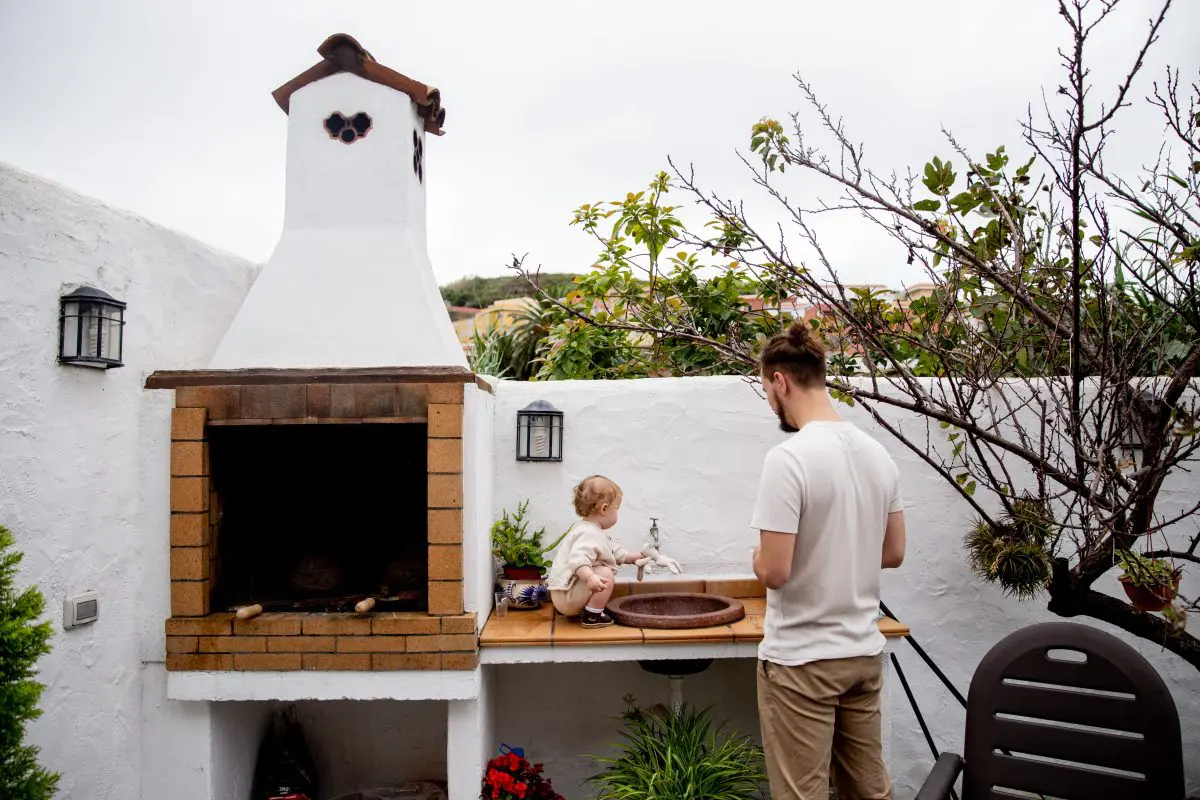
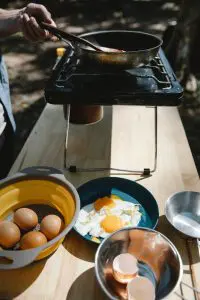 If we exclude, the cooking appliance – hence, the reason you want the outdoor kitchen anyway, the next most important part of this structure is the countertop. You need counter space to prep food and thus, enjoy the backyard. What’s the point of preparing everything indoors? And so, if there’s not enough room for both the counter and the seating area, prefer the former. You can always use the same counter as the dining table.
If we exclude, the cooking appliance – hence, the reason you want the outdoor kitchen anyway, the next most important part of this structure is the countertop. You need counter space to prep food and thus, enjoy the backyard. What’s the point of preparing everything indoors? And so, if there’s not enough room for both the counter and the seating area, prefer the former. You can always use the same counter as the dining table.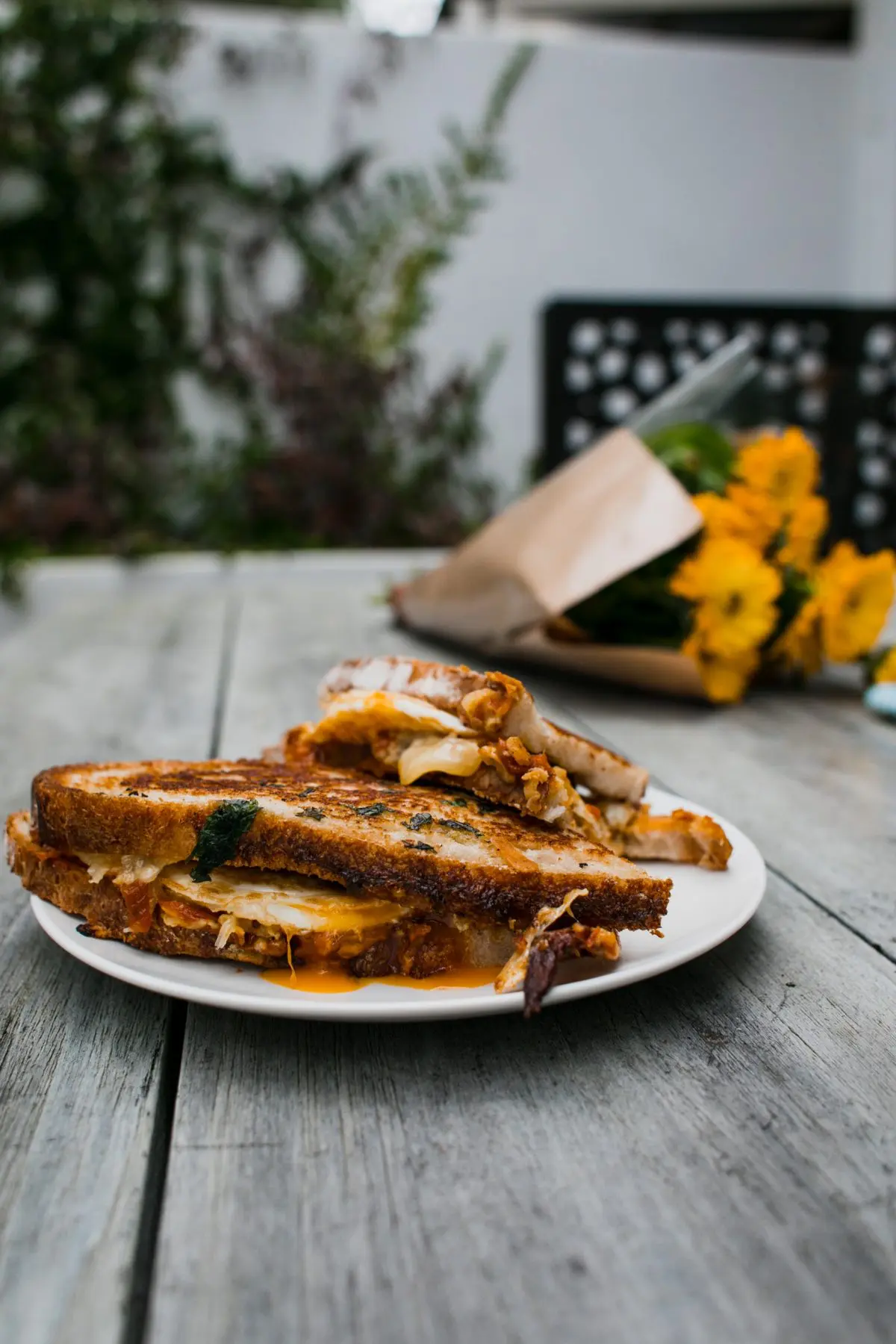
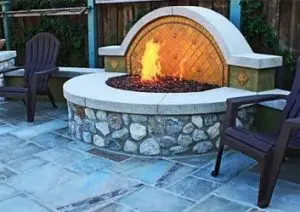 By definition, rustic outdoor kitchen designs have a traditional character, a casual appearance. While rustic is a broad term, it mainly embraces natural elements – like wood, accent features, an earthy feeling. There’s a focus on natural materials. Thus, an outdoor kitchen can be made of natural stone and consist of wooden elements too – like protruding beams on the ceiling over the countertop. The furniture may be handmade, the doors of the outdoor kitchen cabinets may be made of wood, the colors are neutral. Whether you opt for a cottage or Tuscan look, rustic is for you. It’s inviting, friendly, cozy and has no modern elements.
By definition, rustic outdoor kitchen designs have a traditional character, a casual appearance. While rustic is a broad term, it mainly embraces natural elements – like wood, accent features, an earthy feeling. There’s a focus on natural materials. Thus, an outdoor kitchen can be made of natural stone and consist of wooden elements too – like protruding beams on the ceiling over the countertop. The furniture may be handmade, the doors of the outdoor kitchen cabinets may be made of wood, the colors are neutral. Whether you opt for a cottage or Tuscan look, rustic is for you. It’s inviting, friendly, cozy and has no modern elements.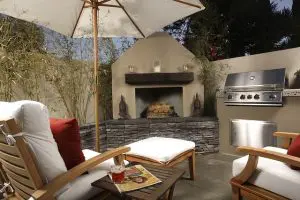 Contemporary outdoor kitchens are modern. Emphasis is given to the airy look, the clean lines, the simplicity of the style. There’s nothing intricate and ornamental here. And while wood can be incorporated in small doses, it is usually combined with more modern materials – like concrete, glass, marble, stainless steel. Even if this is not a minimalistic outdoor kitchen area, there’s no clutter. There’s no clutter in the surroundings either. Not too many stools, types of seats, small and big tables – the whole backyard space is neat.
Contemporary outdoor kitchens are modern. Emphasis is given to the airy look, the clean lines, the simplicity of the style. There’s nothing intricate and ornamental here. And while wood can be incorporated in small doses, it is usually combined with more modern materials – like concrete, glass, marble, stainless steel. Even if this is not a minimalistic outdoor kitchen area, there’s no clutter. There’s no clutter in the surroundings either. Not too many stools, types of seats, small and big tables – the whole backyard space is neat.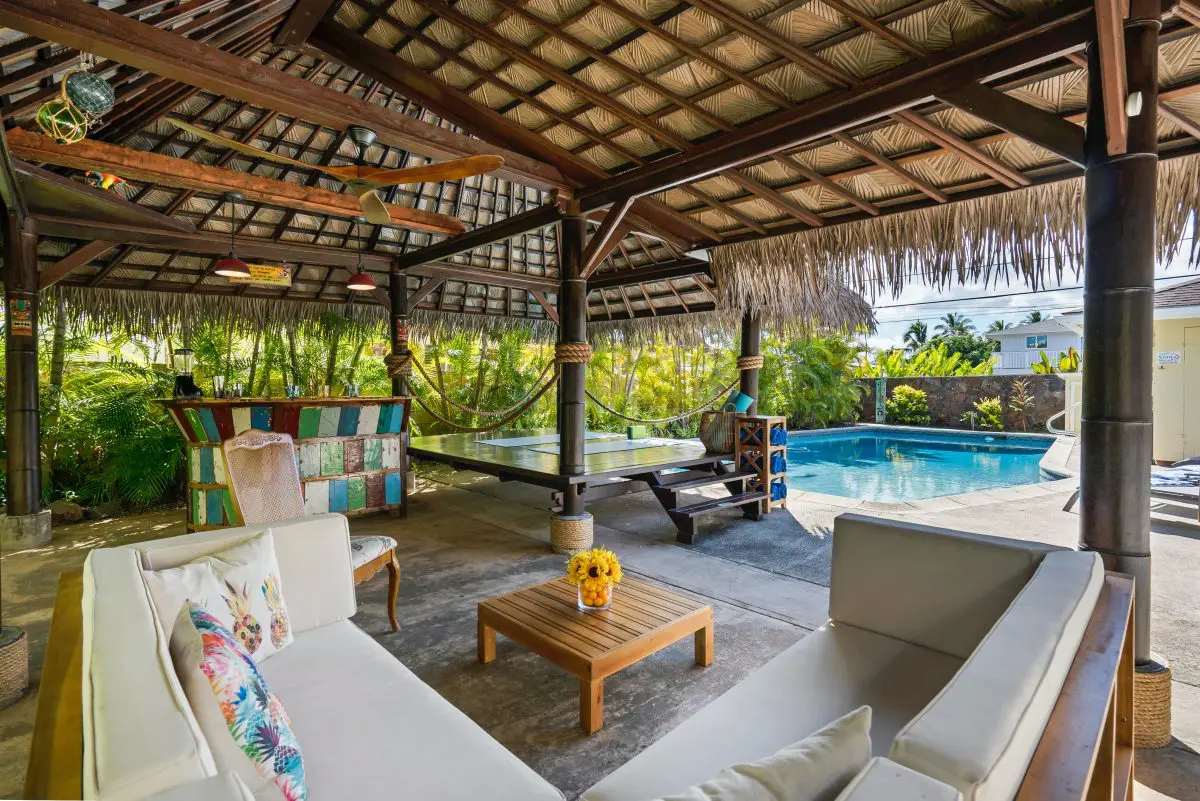
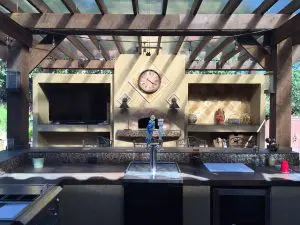 Pergolas are excellent structures for all parts of the yard. They cover decks, patios, walkways – why not the outdoor kitchen? The only downside here is the way pergolas are made.
Pergolas are excellent structures for all parts of the yard. They cover decks, patios, walkways – why not the outdoor kitchen? The only downside here is the way pergolas are made.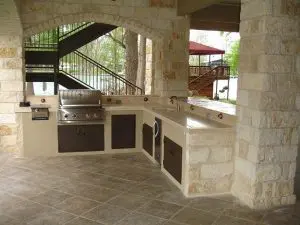 Let’s say that you plan to install an outdoor kitchen now and considering the covering options as well.
Let’s say that you plan to install an outdoor kitchen now and considering the covering options as well.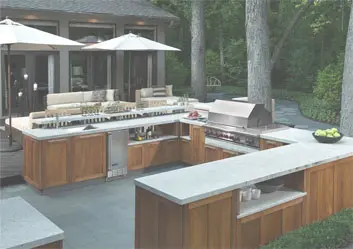
 While tempting to focus on the outdoor kitchen design first, leave it for last. Finding the perfect match to your taste may matter enormously but truth be told, there are some other matters that have priority. Everything related to function. Remove function from the equation and you will end up with an inconvenient kitchen or an exposed-to-the-elements environment that won’t be inviting at all. Who wants that?
While tempting to focus on the outdoor kitchen design first, leave it for last. Finding the perfect match to your taste may matter enormously but truth be told, there are some other matters that have priority. Everything related to function. Remove function from the equation and you will end up with an inconvenient kitchen or an exposed-to-the-elements environment that won’t be inviting at all. Who wants that?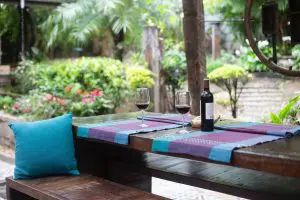 Once everything related to function is all set, you can start talking designs. Resistant materials don’t imply boring appearance. In fact, some of the most wonderful materials ideal for outdoor kitchen building are extremely strong and resistant – something like stone, concrete, and brick.
Once everything related to function is all set, you can start talking designs. Resistant materials don’t imply boring appearance. In fact, some of the most wonderful materials ideal for outdoor kitchen building are extremely strong and resistant – something like stone, concrete, and brick.